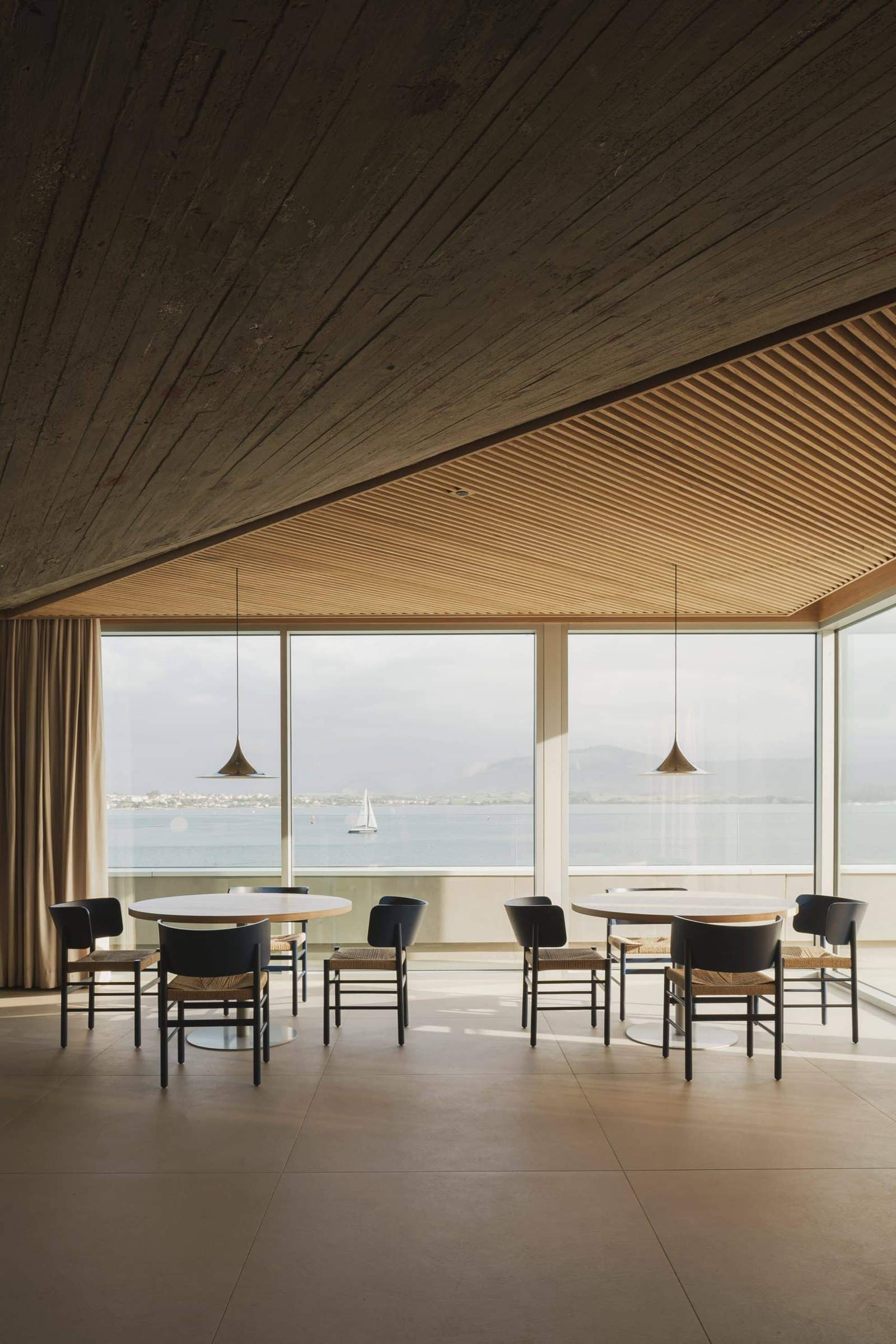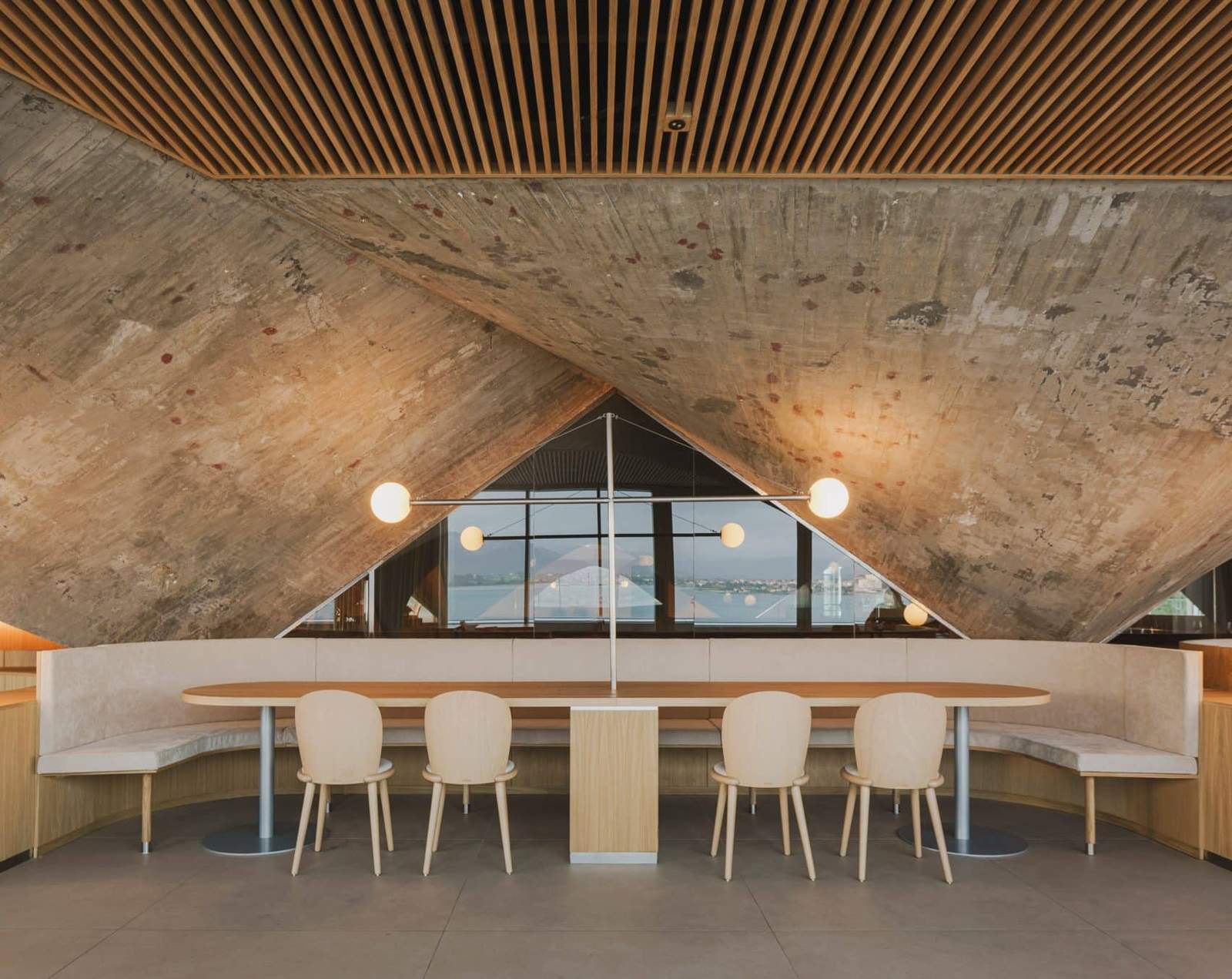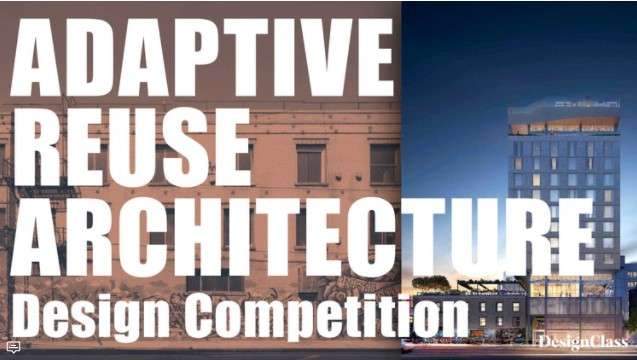Madrid-based Zooco Estudio has crafted a remarkable restaurant within the Cantabrian Maritime Museum in Santander, Spain, showcasing and honoring the building’s brutalist architectural heritage. Set within a striking vault of concrete paraboloids, unearthed during the museum’s renovation, and complemented by a slatted timber ceiling reminiscent of the region’s shipbuilding legacy, the restaurant offers a unique dining experience overlooking the serene Santander Bay.
Architectural Legacy: Restoring and Reviving
Located on the museum’s second floor, the restaurant overlooks the tranquil waters of Santander Bay and resides within a landmark structure designed by architects Vicente Roig Forner and Ángel Hernández Morales in the mid-1970s. The space features original concrete paraboloids that once supported the museum’s roof, concealed for approximately two decades before Zooco Estudio’s restoration efforts.
Unveiling History: Exposing Concrete Paraboloids
Zooco Estudio’s restoration prioritized the preservation and prominence of the concrete paraboloids, which had been obscured during previous renovations. By removing paint and coatings, the studio reintroduced the raw beauty of the paraboloids, ensuring they reclaim their rightful place as focal points within the restaurant’s design.
Harmonizing Elements: Timber Ceiling and Maritime References
A false ceiling composed of slatted timber panels bridges the gaps between the concrete arches. Thus, paying homage to the museum’s maritime theme and concealing mechanical systems. Referencing the hull of a boat, these panels infuse warmth into the space. While maintaining a seamless dialogue between concrete and wood.
Practical Symmetry: Interior Layout and Furnishings
The restaurant’s interior layout is dictated by the elliptic paraboloids, with low arches influencing the distribution of furnishings. Wooden and steel furniture, reminiscent of shipbuilding materials, features subtle curves reminiscent of boat aerodynamics. While lighting fixtures draw inspiration from ship masts.
Reclaimed Spaces: Patio and Terraces
A notable alteration involved replacing inclined glazing with vertical glass, reclaiming external space for the patio that stretches along the restaurant’s length, offering panoramic views of the harbor below. This design decision enhances the maritime ambiance, akin to being aboard a vessel surrounded by water.
Conclusion: Fusion of Architecture and Culinary Experience
Zooco Estudio’s design for the restaurant at the Cantabrian Maritime Museum seamlessly integrates brutalist architecture with contemporary dining. Therefore, creating a space that not only celebrates the building’s heritage but also offers patrons a memorable culinary experience immersed in Santander’s maritime history.
Finally, find out more on ArchUp:










![International Film Competition [OPEN CALL 2021]](https://archup.net/wp-content/uploads/2021/04/International-Film-Competition-OPEN-CALL-2021.jpg)